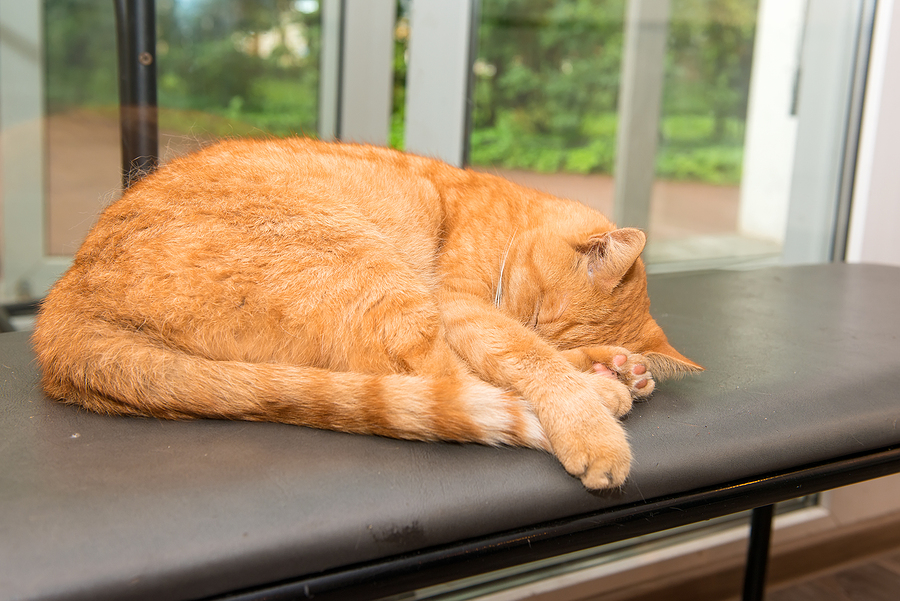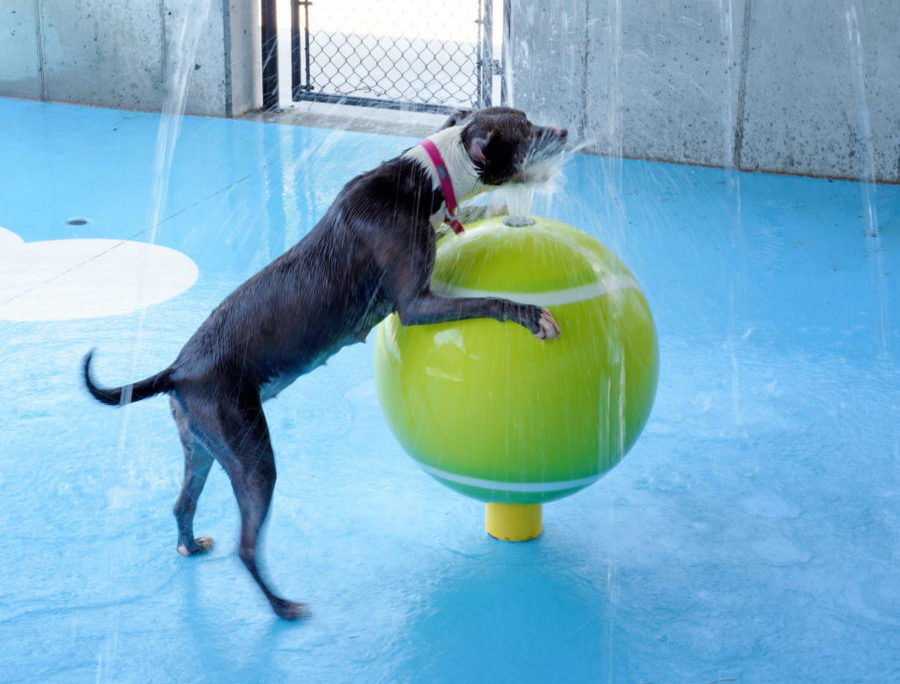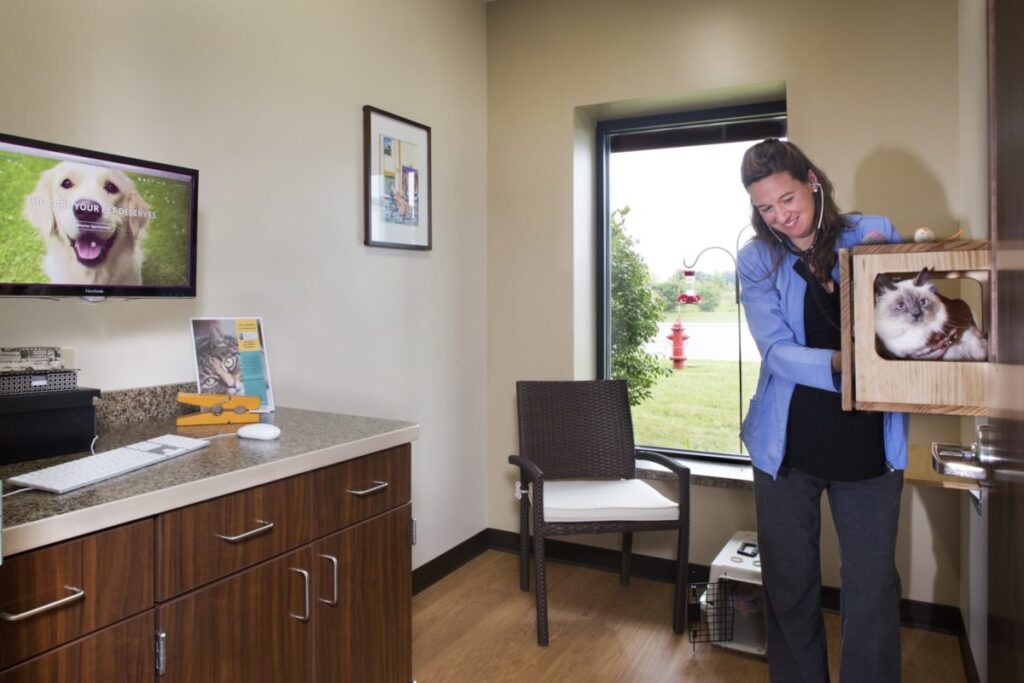
What can we do with housing to create the best possible Fear Free temporary home? Here are some tried-and-true dog housing basics for a Fear Free shelter experience.
Double-Sided Housing
This gives dogs access to two different compartments, usually separated by a small door. This arrangement is useful for three reasons:
- It is easier to clean the run. While it is important to get the dogs out for exercise, a minor spot clean can be easily accomplished with the dog in the other compartment, which leaves more hours available for meaningful enrichment time. (Note: be cautious of major hose cleaning while a dog is on the other side of a guillotine door as the sound of the hose can be stressful for some dogs.)
- The dog has a separate clean side and bathroom side. While it is best to take dogs outside for potty breaks, some dogs cannot make it for long hours without a bathroom break and it is extremely stressful for many dogs to have to soil their living areas. If given the chance, most dogs will choose to eliminate away from where they sleep and eat.
- The dog has more space. In shelters, we are often guilty of providing dogs far too little space. Some shelters have double-compartment housing, but they drop their guillotine doors to house more dogs. Unfortunately, this creates more stress for each individual dog, and works against positive outcomes.
Right Size the Housing
What is the right amount of space? It is hard to tell because many dog housing minimum requirements contradict each other. Here are the rules of thumb we follow:
- The dog should not touch the sides of the enclosure when moving normally. Happy tail is not happy at all! A dog should wag his tail without hitting it against the run walls. Many runs are too narrow. A five-foot minimum works much better than a typical four-foot-wide run.
- The enclosure should allow for choices. If a bed takes up too much room in the run, the dog will not have a choice about whether to lie on the bed or the floor. This is not a good situation, as dogs prefer to have options. Thus, the run should be large enough to allow for a bed, food, water, and an open, unrestricted floor space.
- A variety of housing sizes is desirable. Very large dogs and bonded pairs will benefit from oversize or double runs. You can retrofit existing runs with side-to-side openings to allow for this possibility, or simply remove a run panel or two to allow for a few extra-large runs. On the other hand, very small dogs can feel vulnerable and frightened when housed in very large runs. Create a few smaller double-compartment runs or cages with puppy portals for very small dogs who prefer a smaller space, away from the big dogs.
Inside/Outside Is Best
Inside/outside housing has gone in and out of vogue, but it is now considered to be the preferred standard. When given the choice, dogs will appreciate the fresh air and will spend time outside whenever the weather is nice. If you use indoor/outdoor housing, remember these tips:
- Upsize the inside portion of the run so the dog is still in a humanely sized space when the guillotine is closed, such as overnight.
- Consider local weather when orienting the outside portion. East and south are some of our favorite orientations, while north is often too cold or windy and west is often too hot.
- Weatherproof the guillotine door opening with a second weather door such as a saloon-style door.
Properly designed basic dog housing can help support your behavior, health, and adoption programs. It reduces fear, anxiety, and stress, thereby assisting dogs in finding their forever homes.
This article was reviewed/edited by board-certified veterinary behaviorist Dr. Kenneth Martin and/or veterinary technician specialist in behavior Debbie Martin, LVT.




